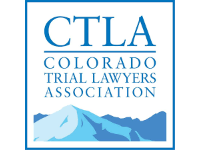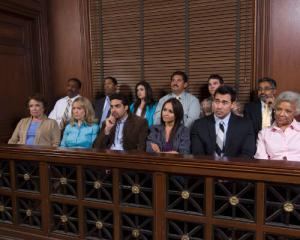
Understanding Comparative Negligence and How It Impacts Your Case
Understanding Comparative Negligence and How It Impacts Your Case At Rector Stuzynski Law Firm, We Get You More! Exceptional Results Require Outstanding Attorneys CALL FOR
At Rector Stuzynski Law Firm, We Get You More!
Exceptional Results Require Outstanding Attorneys



$4 Million +
Motor Vehicle Accident
$1.5 Million
Rear-End Car Accident
$1 Million
Motorcycle Accident

Millions Of Dollars Recovered Every Year For Our Satisfied Clients








When someone is injured in an accident, one of the first questions that often comes up is, “Who was at fault?” In many cases, the answer is not as simple as pointing to one person or one event. Fault can be shared. Colorado law recognizes this reality through a system called comparative negligence, which determines how compensation is divided when more than one party bears responsibility for an accident.
At Rector Stuzynski Law Firm, we’ve spent decades helping injured people understand how this rule affects their case. Comparative negligence can be confusing, but once you understand how it works, you can see how it directly influences your potential settlement or judgment. This guide breaks down everything you need to know about comparative negligence, how it works in Colorado, and what you can do to protect your right to fair compensation.
Comparative negligence is a legal principle used in personal injury cases to assign a percentage of fault to each party involved in an accident. Instead of treating fault as an all-or-nothing issue, the law recognizes that accidents can happen for multiple reasons and that each person’s actions can play a role.
For example, imagine two drivers involved in a collision at an intersection. One driver was speeding, while the other failed to yield when making a left turn. Both contributed to the accident in different ways. Under comparative negligence, each driver’s share of fault will be determined, and their potential recovery will be adjusted accordingly.
This system ensures that victims are not barred from recovering damages simply because they played a small part in the accident. However, it also means that your compensation can be reduced if you are found partially at fault.
To understand Colorado’s approach, it helps to look at the three main types of negligence systems used across the United States.
In states that follow contributory negligence, if you are found even one percent at fault for the accident, you cannot recover any compensation. It is the harshest rule for injury victims and often leads to unfair results. Only a handful of states still use it.
Under pure comparative negligence, you can recover damages no matter how much you were at fault, but your compensation is reduced by your percentage of responsibility. For instance, if you were 90 percent at fault, you could still recover 10 percent of your damages.
Colorado uses a modified comparative negligence system. This means that you can recover compensation only if you were less than 50 percent at fault for the accident. If you are found to be 50 percent or more responsible, you cannot recover anything. This 50 percent rule is critical. The insurance company and the defense attorney will often fight hard to push your percentage of fault as high as possible to reduce or eliminate your compensation. Our firm’s job is to prevent that from happening.
Colorado Revised Statutes §13-21-111 governs comparative negligence in the state. Under this law, your damages are reduced in proportion to your share of fault, but only up to the point where your fault reaches 50 percent.
Let’s look at a few examples to see how this works.
You are injured in a car accident, and the court determines your total damages are $100,000. However, you were found to be 10 percent at fault for speeding slightly over the limit. Your compensation would be reduced by 10 percent, and you would receive $90,000.
In another case, you are 40 percent responsible for an accident, while the other driver is 60 percent responsible. Your damages total $50,000. Because you were less than 50 percent at fault, you can still recover, but your award would be reduced by 40 percent, leaving you with $30,000.
If the investigation determines that you were 51 percent responsible for the accident, you would recover nothing, even if your damages were substantial. This threshold creates a battleground for both sides of a case. Insurance companies know that if they can shift even one percent of additional blame onto you, they can avoid paying anything at all.
When we talk about percentages of fault, we’re not just discussing numbers on paper. These percentages directly affect how much money you can put in your pocket after an accident. Every single percentage point matters.
For instance, a difference between 25 percent and 35 percent fault could mean thousands of dollars lost in compensation. That’s why determining fault is one of the most crucial parts of any personal injury case. It requires strong evidence, skilled negotiation, and, when needed, the ability to present a compelling argument in court.
Insurance companies will often try to inflate your share of responsibility to reduce what they owe. They might claim you weren’t paying attention, that you could have avoided the accident, or that your injuries aren’t as severe as you claim. Our firm knows these tactics well, and we counter them with evidence, expert analysis, and witness testimony.
Determining who was at fault and by how much involves a combination of legal standards and factual analysis. The process typically includes:
In Colorado, the final determination of comparative fault is often made by a jury. That makes presenting a clear, persuasive story essential. Jurors must understand how your actions fit into the bigger picture and why the other party’s negligence was the primary cause of your injuries.
Comparative negligence comes into play in many types of personal injury cases, including:
This is the most common situation. For example, if two vehicles collide because one driver was speeding and the other ran a stop sign, both may share blame.
If a pedestrian crosses the street outside of a crosswalk and is hit by a speeding driver, both may be partially at fault.
Motorcyclists are often unfairly blamed for accidents. Even something as minor as not wearing bright clothing can be used by insurers to argue comparative negligence.
If you slip on a wet floor in a store but were looking at your phone at the time, the defense may argue you were partly responsible.
Comparative negligence can apply in certain third-party workplace injury claims, especially when contractors or outside vendors are involved.
Each case is unique, and determining fault requires careful investigation. Our team always conducts an in-depth review to ensure our clients are not unfairly blamed for something they could not have prevented.
When an insurance company tries to assign partial blame to you, evidence becomes your strongest weapon. The right evidence can demonstrate that your actions were reasonable and that the majority of fault lies with the other party.
Some of the most powerful evidence includes dashcam or surveillance footage, accident scene photos, vehicle black box data, eyewitness statements, cell phone records, weather and road condition reports, and expert accident reconstruction analysis.
At Rector Stuzynski Law Firm, we often bring in professional investigators and reconstruction experts early in a case. Preserving evidence quickly can make all the difference when the insurance company starts trying to shift blame.
Comparative negligence doesn’t just affect what happens in court. It also heavily influences how insurance companies approach settlement negotiations.
When an insurer evaluates a claim, they assign an internal estimate of fault percentages. If they think you are partly responsible, they will reduce their settlement offer accordingly. For example, if they believe you are 25 percent at fault and your damages total $100,000, they might offer $75,000 or less to test whether you understand your rights.
This is one reason why having experienced legal representation matters so much. Insurers know that self-represented claimants are less likely to challenge fault allocations. Our attorneys, on the other hand, know the law and know how to push back against unfair reductions. We present evidence, negotiate strategically, and make it clear that if the insurance company refuses to settle fairly, we are ready to go to court.
If your case goes to trial, the jury will receive instructions explaining how to apply Colorado’s comparative negligence rule. The jury must decide whether each party was negligent, whether that negligence caused the accident, the percentage of fault assigned to each party, and the total amount of damages sustained.
The court then reduces the final award based on your percentage of fault. This means that the clarity and credibility of your case presentation directly affect your outcome. Jurors must not only believe that the other party was more at fault but also understand why your share of fault, if any, should be minimal.
That is why our firm spends significant time preparing clients and witnesses. We simplify complex facts, use visual aids, and tell your story in a way that connects with jurors. The truth is that juries often make decisions based on fairness and common sense, and we work hard to show why it would be unjust to reduce your compensation unfairly.
Accidents involving multiple parties can be particularly complex under Colorado’s comparative negligence law. Each defendant’s share of fault must be determined, and the total must add up to 100 percent.
For example, in a three-car collision:
Driver A may be found 60 percent at fault, Driver B 30 percent, and Driver C (our client) 10 percent.
In this case, Driver C can still recover damages, but the amount would be reduced by 10 percent. If multiple defendants are found liable, they may each be responsible for paying their share of damages proportionate to their fault.
Colorado also uses a rule known as several liability, meaning each defendant is responsible only for their specific share of damages. This prevents one party from being stuck with the entire judgment if another defendant cannot pay.
Insurance companies are masters at using comparative negligence to their advantage. Adjusters are trained to ask questions that elicit admissions of partial fault. They may seem friendly on the phone, but their goal is to collect statements they can later use to argue that you contributed to the accident.
Common tactics include asking leading questions about what you could have done differently, suggesting you were distracted or tired, downplaying the other driver’s negligence, and emphasizing minor mistakes to make you seem careless.
Once you have legal representation, the insurance company must communicate through your attorney. This protects you from saying something that could be twisted against you. Our firm not only handles all communication but also ensures that every fact presented supports your claim and minimizes any alleged fault.
Your behavior after an accident can also influence how fault is assigned. Certain actions can either strengthen or weaken your position.
Seek immediate medical attention and follow all treatment recommendations. Document everything with photos, notes, and witness contact information. Notify your insurance company promptly. Contact an attorney before giving a recorded statement.
Admitting fault at the scene or on social media, delaying medical care, ignoring follow-up treatment or missing doctor appointments, or exaggerating or downplaying your injuries.
Every action you take can shape how your case is perceived by insurers and jurors alike. We guide our clients from day one to make sure their conduct aligns with their best legal interests.
In wrongful death cases, comparative negligence still applies. If the deceased person was partially at fault for the accident that caused their death, the compensation awarded to their surviving family members will be reduced by that percentage.
For example, if a driver was killed in an accident but found to be 20 percent responsible, the family could still recover 80 percent of the total damages. These cases are particularly sensitive, and our firm approaches them with both compassion and strategic precision. The goal is always to secure as much financial recovery as possible for grieving families.
Comparative negligence cases can quickly become complicated. Without legal representation, you are at a severe disadvantage. Insurance companies have teams of adjusters and lawyers who know how to manipulate the law to minimize payouts.
When you work with Rector Stuzynski Law Firm, we investigate thoroughly to uncover every piece of evidence that supports your claim, challenge false fault assignments made by the insurance company, negotiate strategically to secure a fair settlement before trial, prepare aggressively for litigation if the insurer refuses to be reasonable, and explain your options clearly so you understand how each decision affects your outcome.
Our goal is always to protect your rights, your financial future, and your peace of mind.
Because the law is complex, there are many misconceptions about comparative negligence. Here are some of the most common.
Myth 1: If I was partly at fault, I can’t recover anything.
Truth: In Colorado, you can still recover compensation as long as you were less than 50 percent at fault.
Myth 2: The police report determines fault completely.
Truth: The police report is important, but it’s not final. Additional evidence and expert opinions can change the determination.
Myth 3: The insurance company’s fault assessment is fair.
Truth: Insurers often assign inflated fault percentages to save money. Never accept their version without legal review.
Myth 4: It’s not worth pursuing a claim if I share blame.
Truth: Even partial recovery can make a significant difference in covering medical bills, lost wages, and other costs.
Myth 5: The percentage of fault is fixed early on.
Truth: Fault can change as new evidence emerges. A skilled attorney can reduce your assigned fault through negotiation or trial.
The key to protecting yourself under Colorado’s comparative negligence rule is to act quickly and strategically after an accident. That means documenting everything, avoiding statements that can be used against you, and hiring a law firm that understands how to handle these complex issues.
Our attorneys know how to dismantle insurance arguments, clarify the real causes of accidents, and make sure fault is assigned accurately. Every case is unique, but our goal never changes: to ensure our clients are treated fairly and compensated fully.
At Rector Stuzynski Law Firm, we have helped countless clients recover fair compensation even when the insurance company tried to blame them for their own injuries. Comparative negligence cases are complex, but with the right strategy, evidence, and legal experience, you can still achieve justice.
If you were injured in an accident and aren’t sure how much fault may be assigned to you, don’t leave it to chance. Contact us today for a free, no-obligation consultation. We’ll review your case, explain your options, and fight to protect every dollar you deserve.

This article was written by Michael Stuzynski of Rector Stuzynski Law Firm. Michael is a decorated personal injury attorney that has been helping Colorado Springs injury victims get compensation since 2019. With hundreds of injury settlements under his belt, he is an expert in all areas of personal injury law and litigation.

Understanding Comparative Negligence and How It Impacts Your Case At Rector Stuzynski Law Firm, We Get You More! Exceptional Results Require Outstanding Attorneys CALL FOR

How Personal Injury Cases Are Valued During Settlement Negotiations At Rector Stuzynski Law Firm, We Get You More! Exceptional Results Require Outstanding Attorneys CALL FOR

Why Insurance Companies Try to Minimize Your Claim (and How We Fight Back) At Rector Stuzynski Law Firm, We Get You More! Exceptional Results Require

What Is Subrogation in Personal Injury Cases and How Does It Affect Your Settlement? At Rector Stuzynski Law Firm, We Get You More! Exceptional Results

How Pre-Existing Conditions Affect Personal Injury Cases At Rector Stuzynski Law Firm, We Get You More! Exceptional Results Require Outstanding Attorneys CALL FOR A FREE

Why Is My Personal Injury Case Going To Trial? At Rector Stuzynski Law Firm, We Get You More! Exceptional Results Require Outstanding Attorneys CALL FOR
We provide legal services for personal injury and accident victims throughout the state of Colorado, but we focus on clients in these areas: Colorado Springs, Manitou Springs, Cimarron Hills, Northeast Colorado Springs, Southeast Colorado Springs, Stratmoor, Fort Carson, Air Force Academy, East Colorado Springs, Old Colorado City, Pleasant Valley, Broadmoor, Stratton Meadows, Fountain, Northwest Colorado Springs, Gleneagle, Northgate, Briargate, Monument, Woodmoor, Black Forest, Pueblo, Canon City, Larkspur, Security-Widefield, Peyton, Falcon, Calhan, Castle Rock, Teller County, El Paso County, Elbert County, Park County, Douglas County and nearby cities.
We serve clients injured in the following zip codes: 80907, 80909, 80918, 80917, 80931, 80932, 80933, 80934, 80935, 80936, 80937, 80941, 80942, 80946, 80947, 80949, 80950, 80960, 80962, 80977 ,80995 ,80997 80901, 80912, 80904, 80915, 80905, 80910, 80923, 80922, 80919, 80920, 80916, 80939, 80914, 80951, 80924, 80927, 80938, 80906, 80840, 80829, 80902, 80809, 80841, 80911, 80908, 80929, 80819, 80921, 80925, 80132, 80926, 80913, 80863, 80817, 80831, 80133, 80930, 80860, 80814, 80813, 80118, 80106, 80928, 80866, 80816, 80808, 80104, 80116, 81008, 80864, 80135, 81240, 81007, 80109, 81290, 80107, 80108, 80425, 81215, 81221, 80117, 80827, 81212, 80134, 80835, 81003, 80131, 81226, 81001, 80138, 80125, 81002, 81009, 81010, 81011, 81012, 80124, 81244, 80126, 80820, 80130, 80163, 80433, 80129, 80833, 80112, 80832, 81025, 81005, 81223, 81006, 80470, 80127, 80122 and beyond.